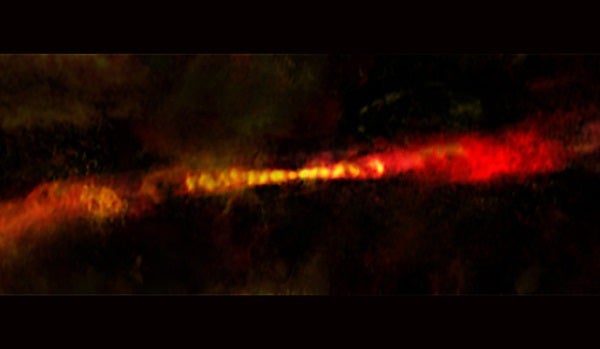It is the first time astronomers have seen such a growth pattern within a star cluster — a chaotic, turbulent environment that is common for star formation. Previous observations have focused on stars forming in more isolated regions of space.
In a study published this week, astronomers described the cosmic convulsions within Serpens South, a star cluster 1,400 light-years from Earth. The researchers focused in particular on a protostar called CARMA-7.
The researchers recorded 22 “episodes” in which CARMA-7 experienced the gravitational push-pull that characterizes star formation. As protostars ingest raw material, they have counter-balancing emissions of material they don’t need. Such “outflow” is important to researchers because it can be measured more easily, unlike the hard-to-detect incoming matter.
“Outflows are very common in astrophysics,” said Héctor Arce from Yale. “They are good indicators of protostars, evolved stars, and even supermassive black holes. They tell us that there is a central massive object in the outflow origin, with a surrounding accretion disk.”
Adele Plunkett from the European Southern Observatory in Santiago, Chile, and her colleagues used data from the Atacama Large Millimeter/sub-millimeter Array (ALMA) in Chile to conduct the research.
“This is the beginning of being able to understand cluster regions,” Plunkett said. “In the past, we only saw cumulative outflows. To be able to observe individual outflows, with distinct ejection events, was exciting — and something we could only do with ALMA.”
Plunkett said the technology allows researchers to determine details about the star formation process, such as how often material is accreted or ejected on time scales of a few hundred years. Further observation promises an even greater level of detail about protostars in their most common environment.
“This result shows that when young stars grow they do so episodically, in little growth spurts, rather than steadily,” said Pieter van Dokkum from Yale. “They’ve learned to chew their food before they swallow.”










